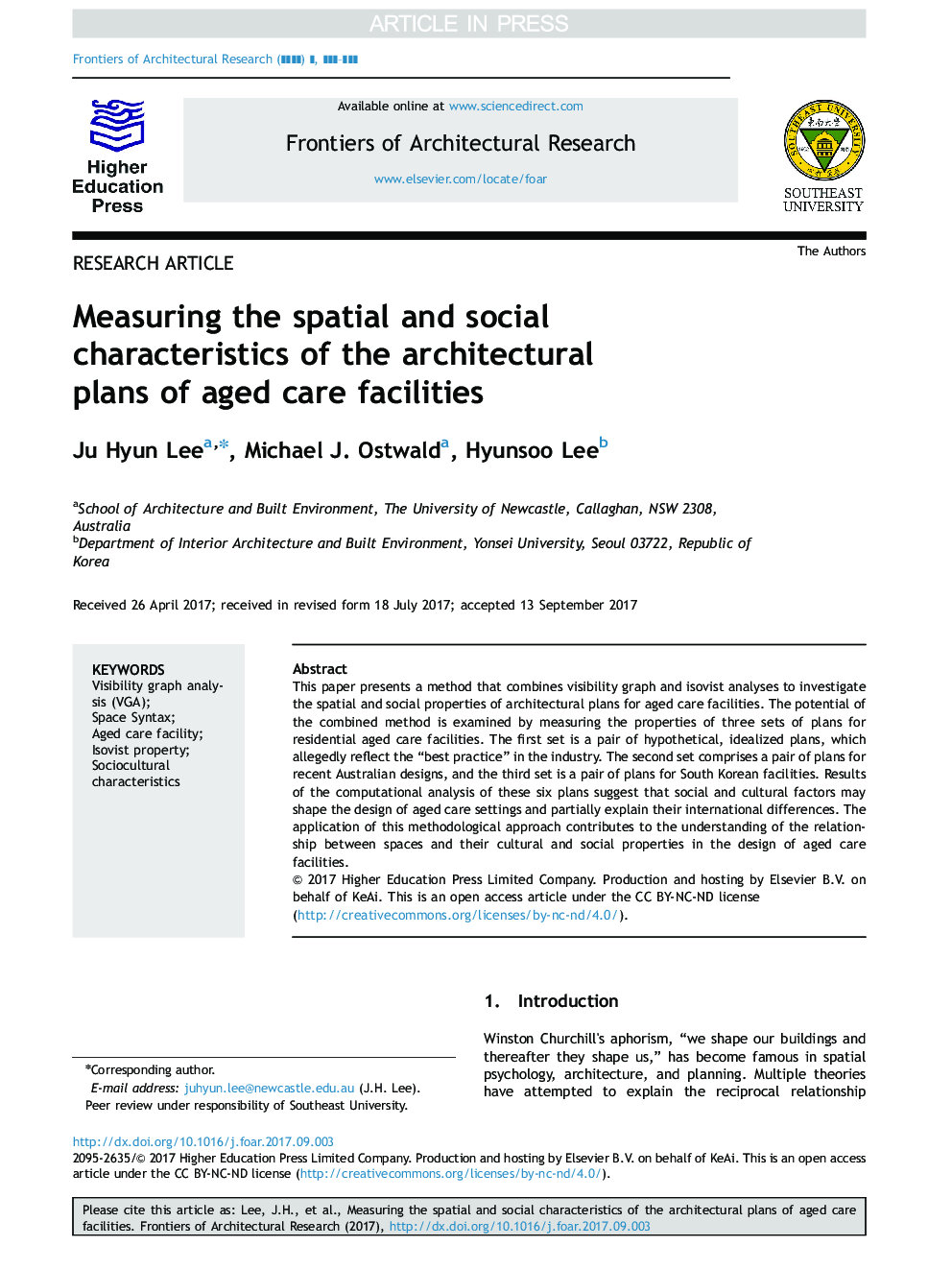| Article ID | Journal | Published Year | Pages | File Type |
|---|---|---|---|---|
| 6742439 | Frontiers of Architectural Research | 2017 | 11 Pages |
Abstract
This paper presents a method that combines visibility graph and isovist analyses to investigate the spatial and social properties of architectural plans for aged care facilities. The potential of the combined method is examined by measuring the properties of three sets of plans for residential aged care facilities. The first set is a pair of hypothetical, idealized plans, which allegedly reflect the “best practice” in the industry. The second set comprises a pair of plans for recent Australian designs, and the third set is a pair of plans for South Korean facilities. Results of the computational analysis of these six plans suggest that social and cultural factors may shape the design of aged care settings and partially explain their international differences. The application of this methodological approach contributes to the understanding of the relationship between spaces and their cultural and social properties in the design of aged care facilities.
Keywords
Related Topics
Physical Sciences and Engineering
Energy
Renewable Energy, Sustainability and the Environment
Authors
Ju Hyun Lee, Michael J. Ostwald, Hyunsoo Lee,
